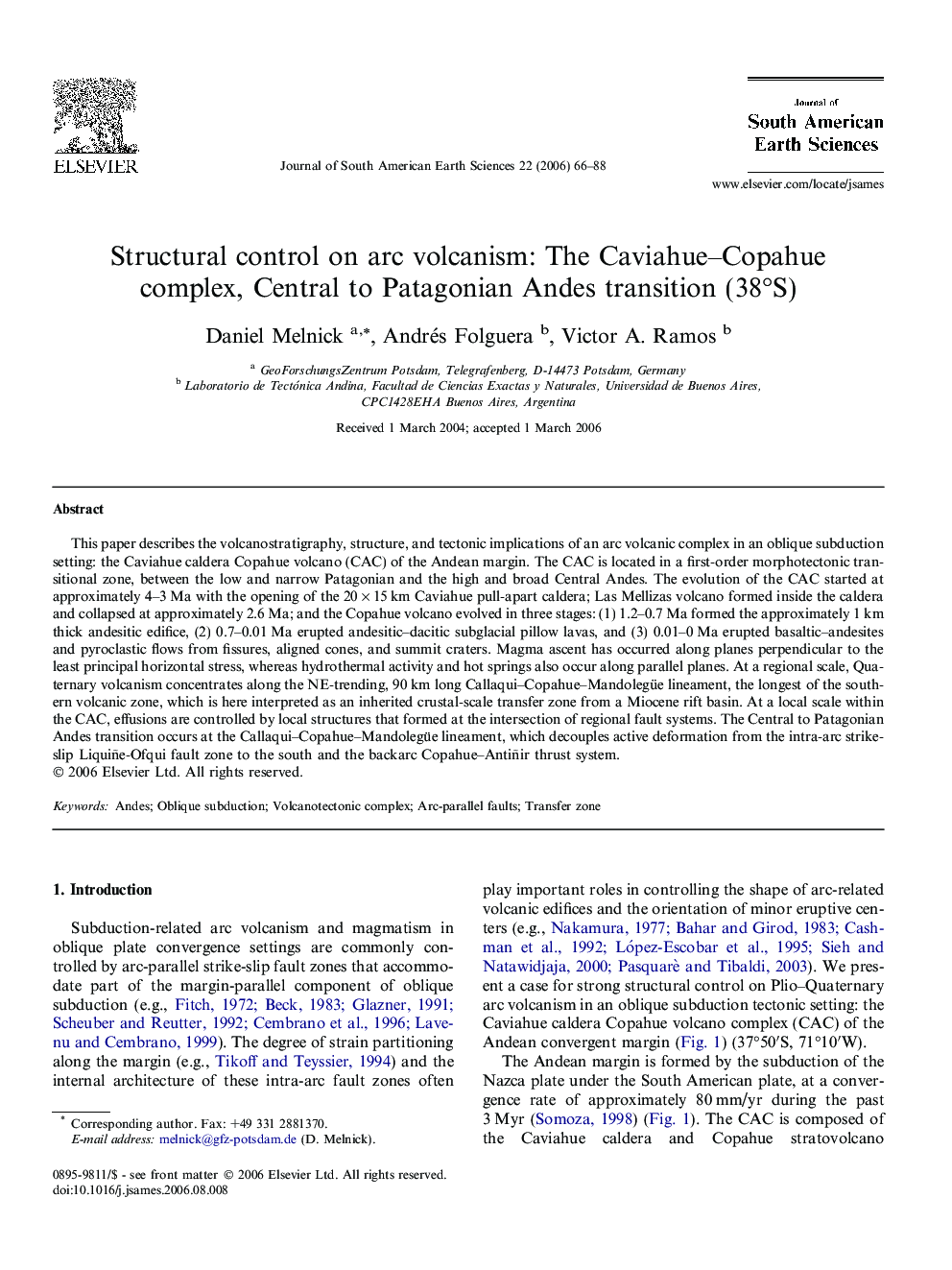| Article ID | Journal | Published Year | Pages | File Type |
|---|---|---|---|---|
| 4683003 | Journal of South American Earth Sciences | 2006 | 23 Pages |
This paper describes the volcanostratigraphy, structure, and tectonic implications of an arc volcanic complex in an oblique subduction setting: the Caviahue caldera Copahue volcano (CAC) of the Andean margin. The CAC is located in a first-order morphotectonic transitional zone, between the low and narrow Patagonian and the high and broad Central Andes. The evolution of the CAC started at approximately 4–3 Ma with the opening of the 20 × 15 km Caviahue pull-apart caldera; Las Mellizas volcano formed inside the caldera and collapsed at approximately 2.6 Ma; and the Copahue volcano evolved in three stages: (1) 1.2–0.7 Ma formed the approximately 1 km thick andesitic edifice, (2) 0.7–0.01 Ma erupted andesitic–dacitic subglacial pillow lavas, and (3) 0.01–0 Ma erupted basaltic–andesites and pyroclastic flows from fissures, aligned cones, and summit craters. Magma ascent has occurred along planes perpendicular to the least principal horizontal stress, whereas hydrothermal activity and hot springs also occur along parallel planes. At a regional scale, Quaternary volcanism concentrates along the NE-trending, 90 km long Callaqui–Copahue–Mandolegüe lineament, the longest of the southern volcanic zone, which is here interpreted as an inherited crustal-scale transfer zone from a Miocene rift basin. At a local scale within the CAC, effusions are controlled by local structures that formed at the intersection of regional fault systems. The Central to Patagonian Andes transition occurs at the Callaqui–Copahue–Mandolegüe lineament, which decouples active deformation from the intra-arc strike-slip Liquiñe-Ofqui fault zone to the south and the backarc Copahue–Antiñir thrust system.
